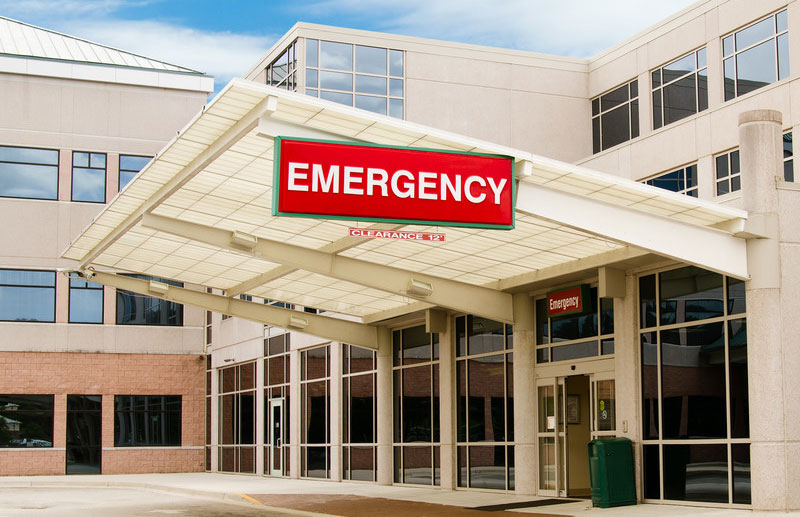Emergency room (ER) services are a boon for medical conditions that require immediate action, such as an injury or sudden illness. As medical billing service providers know, coding and billing for emergency care can be a major challenge without comprehensive charting. However, a www.hfma.org article points out that, at most EDs across the country, there is an opportunity to improve care, decrease risks, and increase revenue by focusing on documentation practices.
The ERchart serves many purposes. Besides being used to justify reimbursement from insurance companies, ER documentation communicates to future providers what was done for the patient. This includes diagnostic tests, medical decision making and treatments, discussions with patients and families relevant to care, consultant recommendations, patient follow-up, and many other aspects of the encounter. The ED record also serves as a defense in the event of a lawsuit. Additionally, ED charts are reviewed for quality improvement, purposes of research, and in utilization/risk management. To tell the complete story, the ED chart should be complete, accurate, concise, and organized.
ED Documentation Concerns
While timely and accurate charting is critical, The ED is a busier place than other care areas and this limits time for documentation. There are specific differences between ED notes and notes of other care providers:
- Each ED encounter has to be handled as a new patient encounter and a final one. As a result, the provider needs to record past medical information, the current issue, and plans for future care such as admission or follow up.
- The admitting physician sees the patient only once in ED and the chart is the only way to record the impression that was made.
- Billing of ED visits is different from billing other encounters:
- ED charts are ranked on a complexity level from 1-5, indicating the complexity of care delivered and the amount of resources devoted to the patient
- Each level has minimum documentation requirements that must be met for billing
- Level 1 codes are for low-acuity conditions, while Level 4 and 5 codes are for the most serious conditions that require lots of hands-on treatment.
Both downcoding and upcoding are problems in ED documentation. ED visits with Level 4 or Level 5 evaluation and management codes could see their claims denied or adjusted downward, if the insurance company determines the claim did not justify a high-level code. On the other hand, if the ED physician fails to document the efforts made to stabilize acute patients there will be a gap between the care actually performed and the care documented.The chart will get significantly down-coded, leading to significant loss of revenue in the ED. Documentation around IV administration and medication injections require the recording of both start and stop times for billing.
The www.hfma.org report recommends changing the “routine emergency” culture around documentation in order to achieve a meaningful gain in revenue:
- The first step is to work with the facility’s medical billing service provider to identify those gaps between care performed and care documented. A coding expert will be able to quickly detect areas where the physician’s documentation does not match the timing and other factors related to the care provided.
- The second step is to inform the ED team about the discrepancies to the ED team, including nurses, and explain how that documentation puts the patient and emergency physician at increased risk, and also leaves money on the table.
Operational Issues that affect Medical Billing
A 2017 Beckers Hospital Review report noted that EDs faced several operational issues that affect medical billing and reimbursement:
- Insufficient/loss of physician documentation and/or internal electronic health record disconnections: Actual loss of charts represents revenue loss as well as medico-legal risks. A reliable mechanism needs to be set up for tracking unprocessed charts providing updates to both practice administrators and providers.
- Patients that leave without treatment (LWT): This can be addressed by keeping patients informed about delays, connecting to patients in the reception and providing frequent reassessment, starting care when the patient is triaged, and tracking LWT rate by shift and holding charge nurses accountable.
- Gaps in insurance eligibility verification. Often, patient’s insurance information is not correct, current and/or not valid at the time of their visit to the ED. Efficient insurance verification services are necessary to ensure accurate insurance information is obtained. The updated information should be transmitted to the ED’s medical billing company.
Given the growing emphasis on reporting of core measures and quality initiatives, good medical charting will continue to be a critical requirement to ensure compliance. In addition to dealing with all these issues, emergency physicians also need to keep abreast with changing coding and documentation guidelines and billing rules. Emergency room medical billing services are available to help physicians optimize reimbursement and ensure regulatory compliance as they focus on providing the best level of care to their patients.


